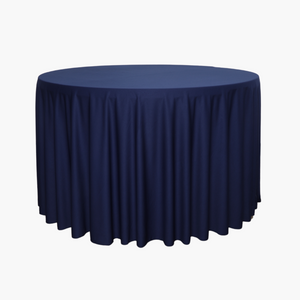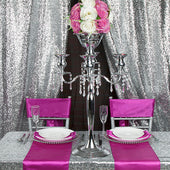Just like most event linens, scuba fabric can be dyed. However, it comes with some challenges. Being one of the top choices by event planners because of its smooth and durable finish, it is possible to add a splash of color to your scuba tablecloths to further customize an event.
Since scuba fabric is made of polyester and spandex, this material cannot absorb dye easily as compared to other materials. However, it would be helpful if you first understand how this material takes. Read on to find out more about it.
Understanding Scuba Fabric
To further understand if you can dye this material, you must understand the materials that build up this fabric.
The composition of scuba fabric is different from that of other fabrics. The composite used in making this fabric includes polyester and spandex, adding stretch, both synthetic fibers that may be tricky to dye. These features impact color absorption. For this reason, dyeing scuba fabric is not as straightforward as it would be when dyeing some kinds of fabrics.
How to Dye Scuba Fabric
1. Preparation
For this first step, you need to gather your materials. Starting with a crucial material is a dye designed for polyester fabrics. The rest of the materials needed are essential to have a neat and clean process. You will also need gloves, a large container, a spray bottle, and water. You can also prepare plastic or old towels to avoid stains.
2. Dyeing Process
There are two steps to dyeing scuba fabric: Immersion and Spray dyeing. Which step you'll take will depend on how you want to dye your linens like scuba napkins or tablecloths.
For dyeing by immersion, mix the dye in hot water. Take extra care to follow the instructions on the package. Next, dip the scuba fabric in the dye bath, ensuring that your linen is well covered. Stir the fabrics around the dye mixture constantly for an even color distribution. When the color transfer feels sufficient, rinse the fabric under cold running water until the water clears. This can help remove excess dye and speed up the curing time.
Dye preparation is necessary for the spray method. Act according to the instructions on the mixture of the dye before transferring the mixture into a spray bottle. Once ready, spray the dye evenly onto the fabric at about 6 to 12 inches away. Do make sure all sides are covered for an even color of the fabric that results. Allow it to stay on and then dry for a few minutes. Finally, clean the cloth in cold water until the water runs completely free of dye.
3. Post Dyeing Care
Allow the scuba fabric to air dry flat or hang in a well-ventilated area after dyeing. Not in direct sunlight, as this could cause the color to fade. Once dry, any additional care with the dye should be followed to keep the color and quality of the fabric. If needed, gently wash in cold water and air dry to set colors and help maintain the texture of your fabric.
While satins are elegant, they wear rather quickly, especially within an active environment. Moreover, scuba fabric is easier to care for: it requires less special care and can be cleaned more simply than satin, which needs more delicate handling to avoid damage.
Tips When Dealing With Dye
- When dyeing scuba fabric, it is best to spot test on a small sample to see how the fabric would react to a specific dye.
- Using your technique of immersion dye, stir the fabric regularly to make the color equally spread within your fabric.
- Spray dyeing is done in such a way that application is affected to cover all areas consistently.
- The dye manufacturer's instructions should be followed closely at all times to avoid fabric damage and to attain the most accurate color.
Dyeing Alternatives
- Colored fabric covers or overlays will give it the color and style you want without having to alter the main fabric.
- You could also use custom-printed fabrics, which are great for getting that specific color or pattern that matches your event theme.
- You can also add colored sashes or ribbons as decorative accessories to your scuba fabric.
Dyeing scuba fabric could serve as a pretty good alternative for an event when you need some color change for your linens. However, special attention should be paid to the treatment this kind of fabric receives, as its properties are pretty different from others. While scuba fabric can be dyed using the appropriate technique and dye application, rich colors can be difficult to achieve, and color evenness can be compromised. The best results possible can be achieved with these steps in immersion or spray dyeing and taking care afterward.
As opposed to dyeing, fabric covers, bespoke-printed options, and ornamental accessories all become very effective for giving one the desired look without sacrificing durability and quality within the fabric. Check these options out to spice up your event decor with style and confidence.
Our Products
Scuba Tablecloths
Napkins
Scuba Event Linens












